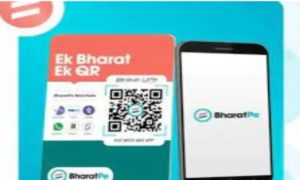Failed UPI payments or transfer to a wrong account could be a result of many factors. In such cases, without panicking it’s important to report the matter to your bank and NPCI as soon as possible.
The Unified Payments Interface (UPI) has literally transformed how people make online transactions nowadays. Whether it is for shopping at a mall, paying for fuel at a petrol pump, or even making a small payment at the local grocery shop, just a few taps and all the payments are done easily. The convenience of UPI payments has increased its adaptation across all sections of consumers.
Read More: Financial rule changes from September 1: Free Aadhaar update, Rs 2000 note deposit and more
However, at times, the same technology can leave us in a fix as online transactions often fail or get stuck while making payments. The UPI payments or transactions may go wrong due to various reasons. Many of us may have faced the inconvenience of failed UPI payment or transfer to a wrong account. This could create a problem when the money is debited from your account but not transferred to the intended person.
Let’s know about the reasons why UPI transactions fail.
Reasons why UPI transactions fail
Slow internet: One of the common reasons for payment failure is a slow internet connection. Transfers often get stuck or fail if your mobile phone is not properly connected to the internet.
Bank servers not working: We often receive a pop-up while making payments if the bank servers on the sender or the receiver’s end are not working. As a result of this, the payments get cancelled.
Incorrect UPI Pin: While an accurate UPI pin is important to make an online payment, users often enter an incorrect pin due to which the transaction fails. Make sure to always use the correct pin.
Read More: SBI Special Scheme: Only Aadhaar card is needed to register for these social security schemes
Insufficient balance: There are times when users are not aware of their bank balance and try to make payments of an amount that is more than their available bank balance. This leads to a failure in the transaction. To avoid any embarrassment due to such situations, always check your balance before initiating a payment.
Daily UPI payment limit exceeded: Banks often set a daily limit on the number of UPI payments that users can make. No transactions can be done after the limit has been exhausted.
Now that you know some of the common reasons why UPI payments fail, learn what to do in such situations.
What to do when UPI transactions fail?
Check daily limits regularly: If you are someone who frequently makes online transactions, then you should keep a count of the daily limit of your UPI payments or the daily money transfer amount. If the limits have been exceeded, wait for 24 hours and try again the next day.
Link more than one bank account: In cases when UPI payments fail to busy bank servers or exhausted daily limits, one can always opt for their alternative bank account that has been linked to their UPI ID.
Read More: Relief For Home Loan Borrowers Soon: Scheme for Relief on Loan Interest To Be Launched in September
Check the receiver’s bank details: UPI payments also fail in cases when the receiver’s bank details are not accurate or are incomplete. One must always double-check the details including the bank account number and IFSC code of the receiver’s bank.
Enter correct UPI: Considering the number of passwords we have to remember, one can often get confused with the UPI PIN and end up entering the wrong PIN. It is suggested to always use the correct PIN for smooth payments. Try writing it somewhere if you forget it too often.
In case of a failed UPI transaction it’s advisable to inform your bank and the National Payments Corporation of India (NPCI), which manages the UPI payments system.
Customers can raise complaints about several issues including failed transactions, money debited but not transferred to the receiver and money transferred to the wrong account, among others, on the NPCI website.
A complaint can be filed under the UPI Dispute Redressal Mechanism section on NPCI website.



































